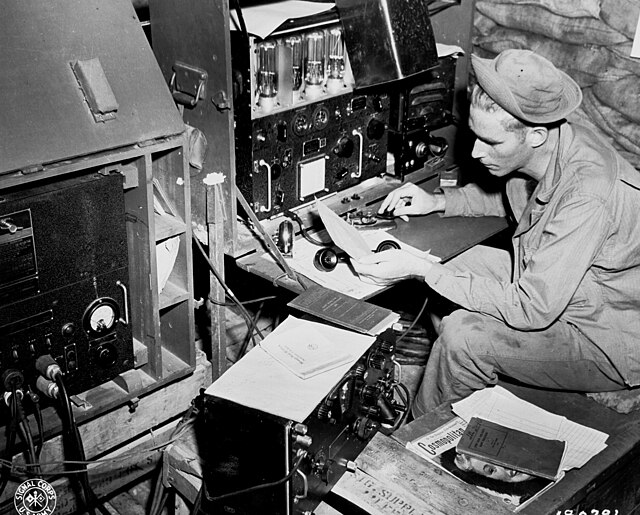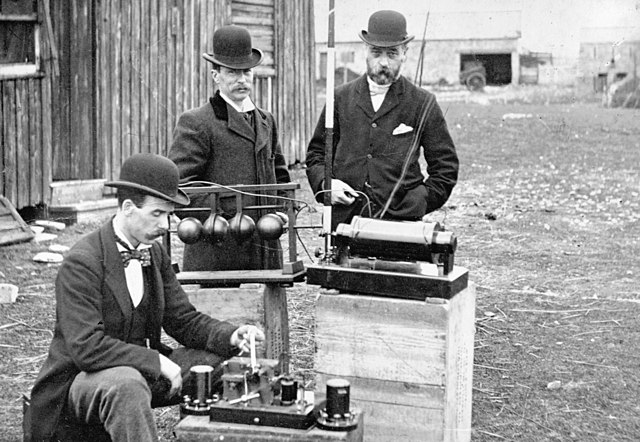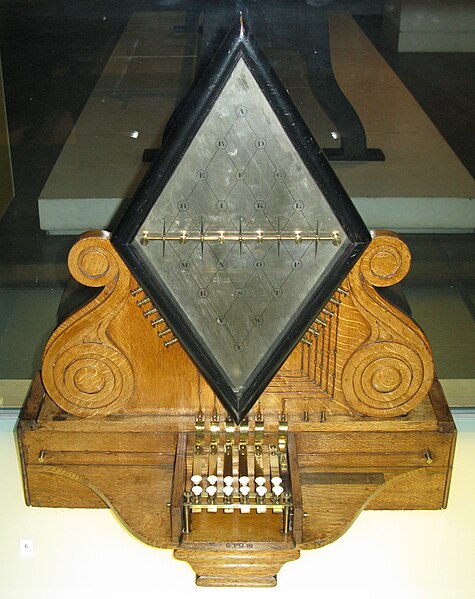Wireless telegraphy or radiotelegraphy is transmission of text messages by radio waves, analogous to electrical telegraphy using cables. Before about 1910, the term wireless telegraphy was also used for other experimental technologies for transmitting telegraph signals without wires. In radiotelegraphy, information is transmitted by pulses of radio waves of two different lengths called "dots" and "dashes", which spell out text messages, usually in Morse code. In a manual system, the sending operator taps on a switch called a telegraph key which turns the transmitter on and off, producing the pulses of radio waves. At the receiver the pulses are audible in the receiver's speaker as beeps, which are translated back to text by an operator who knows Morse code.
A US Army Signal Corps radio operator in 1943 in New Guinea transmitting by radiotelegraphy
Illustration from 1912 of a radiotelegraph operator on a ship sending an emergency SOS call for help
Modern amateur radio operator transmitting Morse code
British Post Office engineers inspect Marconi's transmitter (center) and receiver (bottom) on Flat Holm, May 1897
Electrical telegraphs were point-to-point text messaging systems, primarily used from the 1840s until the late 20th century. It was the first electrical telecommunications system and the most widely used of a number of early messaging systems called telegraphs, that were devised to communicate text messages more quickly than physical transportation. Electrical telegraphy can be considered to be the first example of electrical engineering.
Cooke and Wheatstone's five-needle telegraph from 1837
Morse Telegraph
Hughes telegraph, an early (1855) teleprinter built by Siemens and Halske
Sömmering's electric telegraph in 1809








